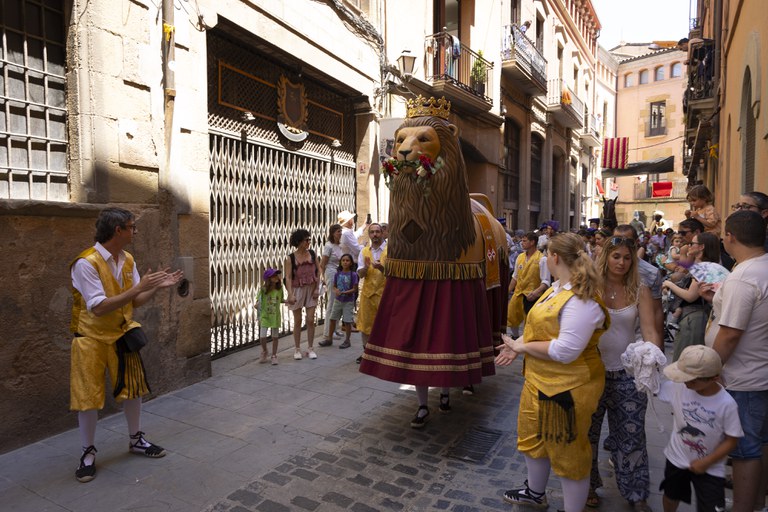El lleó
In 2019, as part of an in-depth investigation of the festive imagery that makes up the Séquito de San Miguel de los Santos, a drawing dating back to 1664 was found, the oldest in the world preserved of a festive piece in a book of the guild of tanners, “the lion”.
In 1664, the City Council invited the guild to participate in the procession held at the inauguration feast of the new church of Piety, the tanners responsible for making the lion dance, at least since the early 17th century, agreed to participate in the feast with this figure, but due to the poor condition of the figure, they decided to make a new one. This document is of great importance because it mentions the measurements and construction material of the figure, and also includes a drawing of the design technically called the “figurine” of the lion.
The presence of a lion in the Vic procession was common between 1601 and 1801.
On July 2, 2021, the Lion of the city was presented in Vic, the new figure of the Séquito de San Miguel de los Santos, created at the Taller d’Escultura Casserres. The Lion is not just any piece of bestiary; it is an animal considered in universal culture to be strong and noble. Many civilizations call it the “king of animals” and for this reason, it is attributed attitudes of courage and majesty. In fact, when represented on various occasions, it appears with a crown, as is the case in Vic. The lion, in turn, symbolizes strength and power, which is why it is often found in many coats of arms and emblems, such as in the old city coat of arms that adorns the town hall façade, under the clock. Not only will the figure be reintroduced, but a new group of bearers will also be launched, managed by the Remei neighborhood association.


